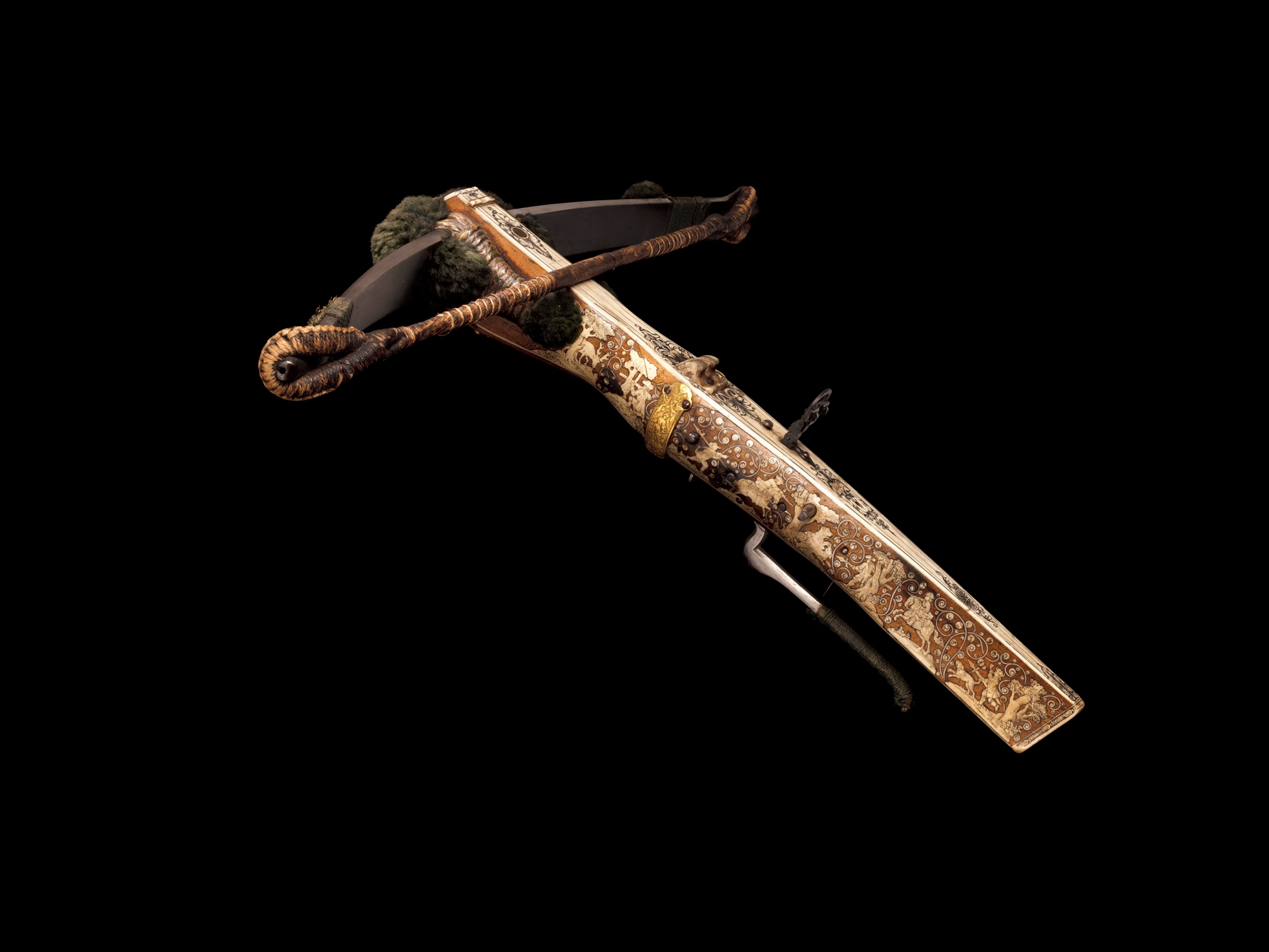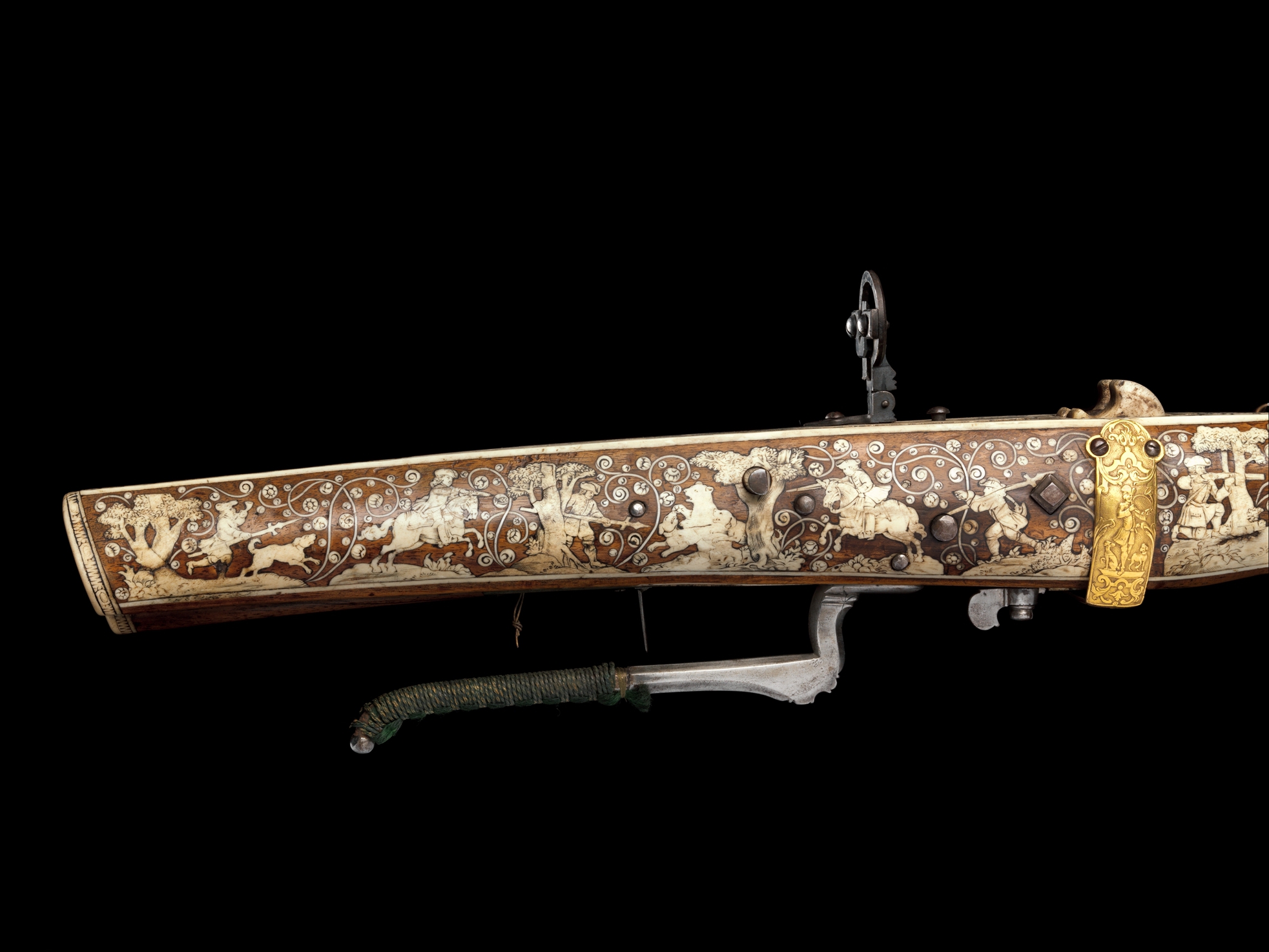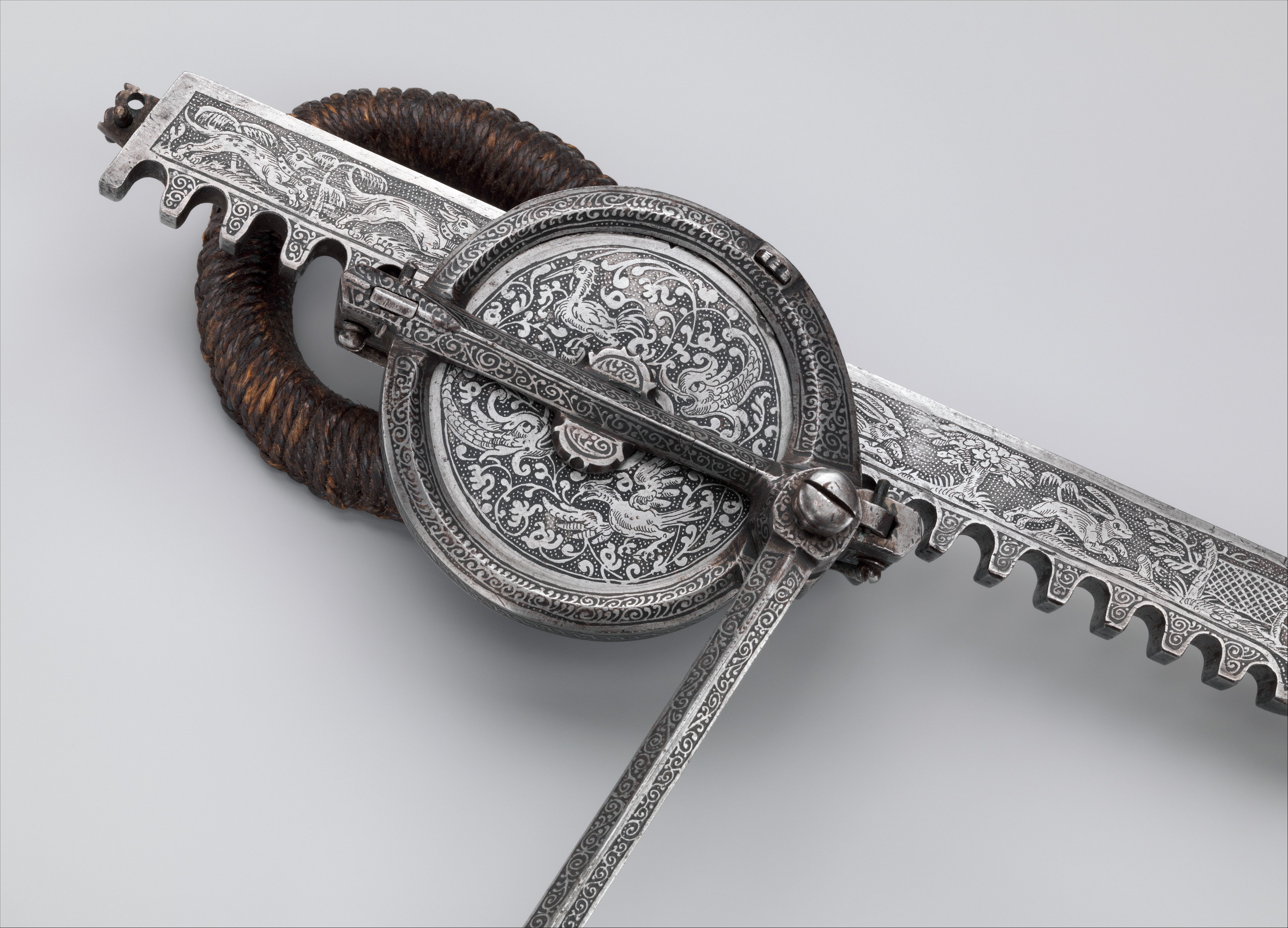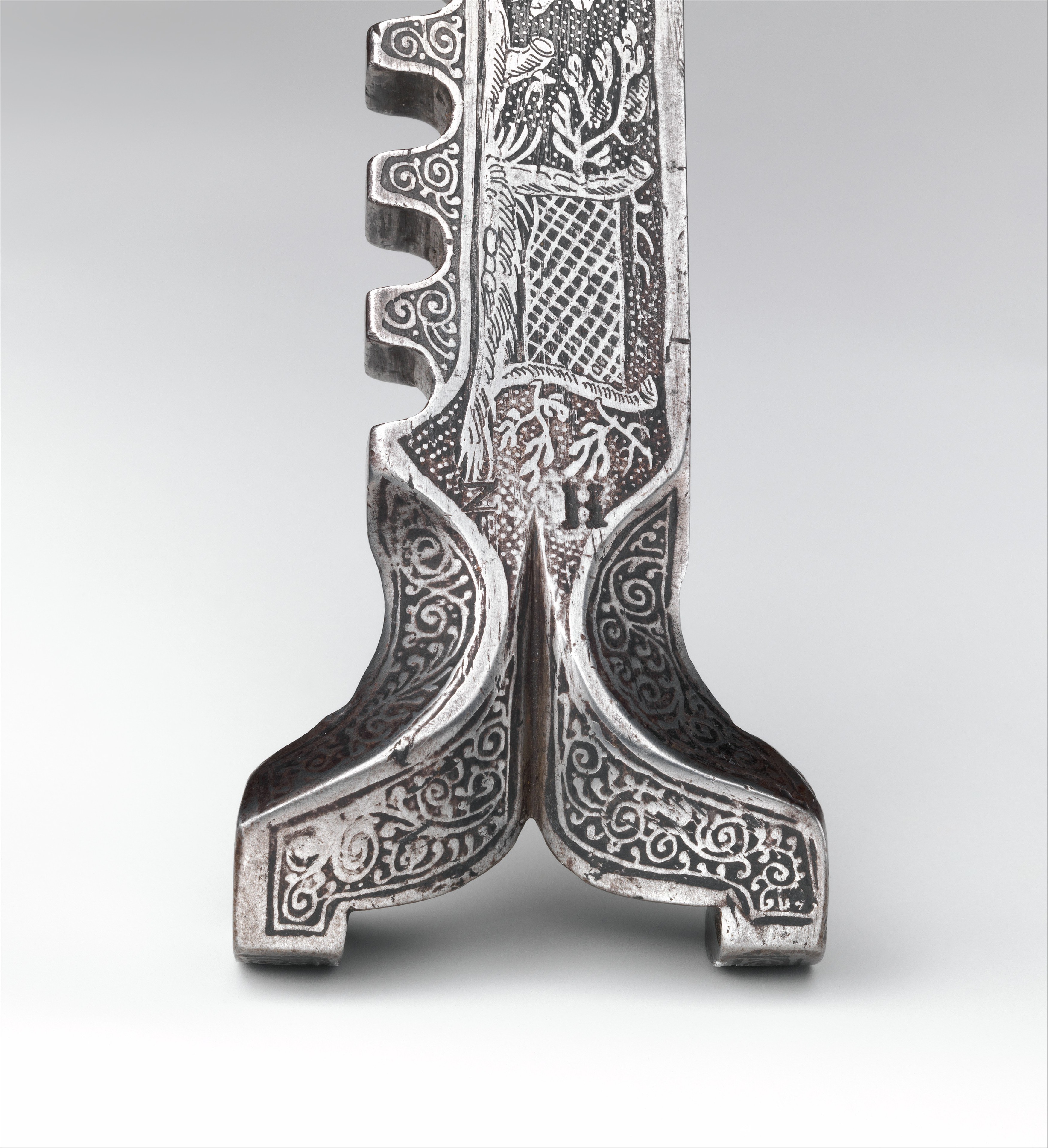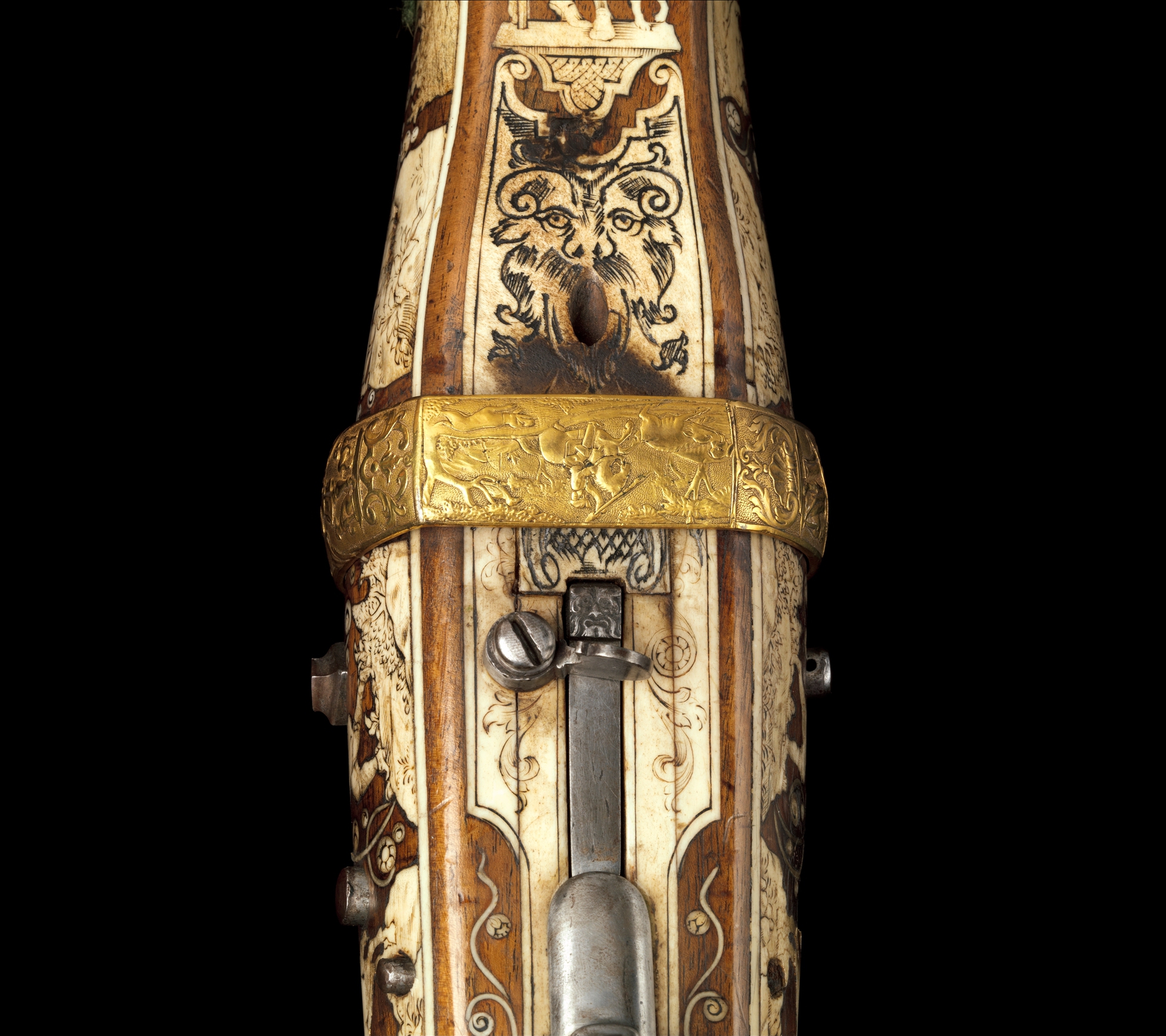Crossbow (Halbe Rüstung) with Winder (Cranequin)
Crossbow attributed to Johann Gottfried Hänisch the Elder German
The most powerful projectile weapon during the Middle Ages, the crossbow had gone out of general use in warfare by the mid-sixteenth century, as a result of the increasing efficiency of hand-held firearms. The crossbow remained popular, however, as a sporting weapon for target shooting and particularly for the hunt, because of its precision, quiet discharge, and the range of its projectiles—up to four hundred yards, depending on the size of the weapon. Heavy crossbows, widely used in central Europe for big-game hunting, had massive gun-shaped stocks, often veneered or inlaid with engraved staghorn. While the bows and the release mechanisms were the work of specialists, the stocks were made by the same artisans and decorators who provided stocks for firearms.
Lighter forms of the crossbow evolved in Italy and France. These prodds, or stone crossbows, were designed to discharge small stones or clay pellets (rather than arrows) so that the valuable pelts of foxes, ermine, and other small animals would not be blemished. They were lightweight and easy to load. Their distinctive, gracefully shaped stocks of fruitwood were frequently carved or inlaid with bone.
Due to rights restrictions, this image cannot be enlarged, viewed at full screen, or downloaded.
This artwork is meant to be viewed from right to left. Scroll left to view more.


